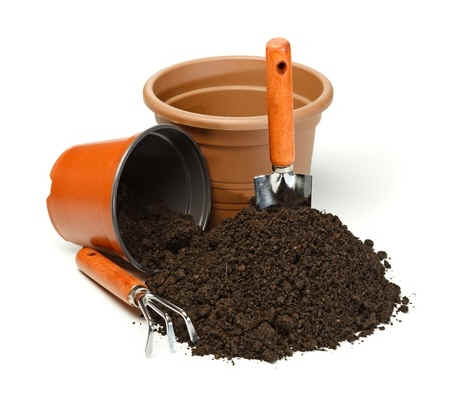
– Growing Asparagus –
If started under the right conditions, an asparagus bed can produce for up to 15 years. Discover when, where, and how to plant, fertilize, and harvest asparagus. Advice from the foremost authorities.
Keep in mind that many asparagus varieties may require different planting conditions. When you purchase crowns, always check with the nursery for variety-specific planting instructions.
Jump Ahead
- Planting Crowns Over Direct Seeding
- When to Plant Asparagus
- Where to Plant Asparagus
- Planting Asparagus Crowns
- Can You Plant Asparagus from Seed?
- Fertilizing Asparagus
- Harvesting Asparagus
- Resources
Planting Crowns Over Direct Seeding
Though it is possible to grow asparagus from seeds, most home gardeners choose to purchase crowns, which are the root system of an established plant. You can purchase one, two, or three-year-old crowns, and though an older, more established plant may seem like the best bang for your buck, the University of Connecticut’s Home and Garden Education Center recommends choosing the younger one-year-old crowns since older crowns may have developed over-crowded roots that could be damaged when harvested. [1]
The extension further recommends examining crowns before you purchase them for signs of developing buds and lack of disease or insects. Look for plants that have full, firm, moist roots. Avoid plants with shriveled roots. [2]
When to Plant Asparagus
Claudia Steen, a Yakima Valley Master Gardener, recommends planting asparagus crowns in the early spring as soon as the soil reaches 50°F. Don’t be in a rush to plant too early. Steen cautions that planting in cold, wet soil could make the plant more susceptible to Fusarium crown rot. [3]
Also, plant the crowns as soon as possible after purchasing. If you can’t plant them immediately, Steen advises wrapping them in slightly damp sphagnum moss until they can be planted. [4]
Where to Plant Asparagus
Choosing the spot where you initially plant asparagus should be considered carefully. Asparagus plants are perennials that can thrive for fifteen years but do not transplant well once established. According to Iowa State University Extension and Outreach, transplanting attempts are usually unsuccessful due to established plants’ extensive and deep root systems. The extension further states that larger, older plants will be severely injured during transplantation and that some may actually die. Those that survive may never produce a good crop. [5]
The University of New Hampshire Extension experts recommend choosing a site that receives at least eight hours of sun per day. They also recommend planting in loose, deep, well-drained, and fertile soil due to the plant’s root system, which can grow to 10-15 feet deep. If your soil is less than optimal, they suggest incorporating manure, compost, and/or green manure cover crops into the soil. [6]
Planting Asparagus Crowns
Here’s advice from the University of Connecticut’s Home and Garden Education Center on how to plant your asparagus crowns.
- First, dig furrows six to eight inches deep, spacing rows 12-18 inches apart.
- Next, place the crowns one to one and one-half feet apart on small mounds within the furrow.
- Finally, back-fill the furrow with two inches of soil, firm the soil around the crowns, and water.
Add 1-2 more inches of soil as the spears appear without completely burying them. The furrow will eventually be filled to its original level during the growing season. [7]
Can You Start Asparagus from Seed?
Though most home gardeners opt to purchase established crowns to start their asparagus beds due to the time involved in growing from seed, asparagus can be grown from seed either indoors in starter trays or directly seeded into the garden.
How to Start Asparagus Seeds Indoors
Seeds should be started 10-12 weeks prior to the last frost of the season. Here’s what the knowledgeable folks at Burpee recommend.
To start indoors, fill individual peat pots or a starter tray with cells containing a seed-starting formula. Plant seeds ½” deep, one per pot or tray. Keep the soil moist and the temperature constant at 70-75°F.
When the seedlings emerge in 10-14 days, move them to a sunny windowsill.
The seedlings are ready to be hardened off when they are 6-10 inches tall, with 4-6 stems and several buds coming from the crown. Harden plants off for one week and then plant as described above. [8]
How to Direct Seed Asparagus
For planting asparagus seeds directly in the garden, the University of Minnesota Extension experts advise creating a temporary bed to grow the asparagus for the first year. Plant the seeds in the spring in a location that is level with sandy soil.
Plant seeds about 1″ deep, 2-3″ apart, in rows one foot apart. The bed must be kept weed-free as the seedlings won’t be able to compete.
The extension further advises mulching the bed with four to six inches of straw in late October to keep it warm during the winter. The crowns can be dug up and transplanted in early April. Keep in mind that this advice is meant for Minnesota gardeners; check with your local extension for optimal planting times for your area. [9]
Fertilizing Asparagus
Asparagus should be fertilized prior to planting, in the spring of each season, and following the final harvest.
Asparagus Soil pH Requirements
To understand exactly what additional nutrients asparagus will require, you should always perform a soil test and base the fertilizing decisions on the results. Asparagus performs best in soil with a pH of 6.5 to 7.0. It will not perform well in acidic soils. [10]
Fertilizing the Asparagus Bed Prior to Planting
In the absence of a test, you can fertilize the soil prior to planting your asparagus. According to the University of Minnesota Extension, the typical garden fertilizer rate for asparagus is to apply 1 to 1.5 pounds of 10% nitrogen, 10% phosphorus, and 10% potassium fertilizer (10-10-10) per 100 square feet before planting. [11]
Seasonal Fertilizing
Richard Jauron of Iowa State University’s Department of Agriculture recommends the following:
“Asparagus can be fertilized in early spring before the spears emerge. An application of 1 to 1.5 pounds of an all-purpose garden fertilizer, such as 10-10-10, per 100 square feet should be adequate. Asparagus can also be fertilized after the last harvest in June. Using a nitrogen fertilizer, apply .10 pound of actual nitrogen per 100 square feet.” [12]
Harvesting Asparagus
When to Harvest Asparagus
In order to produce a healthy asparagus garden that will continue to produce for years, you need to be patient when it comes to harvesting. Ken Johnson from the University of Illinois Extension advises not harvesting the first year to allow the plants to develop. In the second year, it’s also a good idea to skip harvesting to strengthen plants, but if you like, the plants can be harvested lightly (up to two weeks). In year three, you can harvest for up to four weeks. In the following years, you can harvest during the season as long as the spears are at least 3/8″ in diameter. [13]
Harvesting asparagus plants before they have had time to establish strong and healthy crowns will result in poorer plant health and, subsequently, a diminished crop. The same is true if you overharvest, even in a healthy bed.
How to Harvest Asparagus
The University of Georgia Extension advises harvesting asparagus spears when they are five to eight inches long in the morning when temperatures are cool. Harvest by cutting the stems or snapping them. [14] To snap them, firmly grab the spear at ground level and bend toward the ground. The spear will snap at the point above fiber development.
You can also use a sharp knife to cut the spears that are ready to be harvested. Make sure that your garden utensils are clean and disinfected to ensure that you do not spread any viruses that may be present in the garden.
Resources
- [1][2][7] The University of Connecticut – College of Agriculture, Health, and Natural Resources – Home and Garden Education Center – “Asparagus.“
- [3][4] Steen, Claudia – Washington State University Extension – “Growing Asparagus.”
- [5] Iowa State University Extension and Outreach – Horticulture and Home Pest News – “Is it possible to move an established asparagus bed?“
- [6] The University of New Hampshire Extension Service – “Growing Vegetables: Asparagus Fact Sheet.“
- [8] Burpee.com – “Learn About Asparagus.“
- [9][10][11] The University of Minnesota Extension – “Growing Asparagus in Home Gardens.“
- [12] Jauron, Richard – Department of Horticulture – Iowa State University Extension and Outreach – “Answers to Frequently Asked Asparagus Questions.“
- [13] The University of Georgia Extension – “Home Garden Asparagus.“
- [14] Johnson, Ken – The University of Illinois Extension – “How to Successfully Grow Asparagus in Your Garden.”
